It’s all too easy to get into a race of escalating specs with camera gear and more often than not it is only half the story. I started this blog to focus on things that I think are important to film making other than what camera you use. I chose to do this because I feel that the audience does not care what camera you use, and that any camera can be used to great effect by the right person or team to tell a fantastic story.
All that’s needed is the desire to make the most of what you have. Admittedly it’s easier to make nice images with a fantastic camera, but a fantastic camera is just as capable of making bad or boring images as any camera.
Some people shout loudly that it’s the script that count, and it is, along with many other things. I think we can all agree that is not just one thing that makes a film good, and the camera is one of them, but we should not make it a bigger focus than it needs to be.
So here is a post about what I learned from using the under rated little Panasonic AF100
I purchased the Panasonic AF100 at the start of 2011 just when it was released. It was the first of the big chip cameras. It was the flavor of the month for a few months until the Sony F3 came out. After that many people derided the little camera as an also ran. It was criticized for several things most notably was the harsh highlight handling and a softer image than the competing Sony F3. Both of these were true but it was still a great little camera.
I spent a lot of time looking at images on the web, pixel peeping, fiddling with settings and generally fretting about the possibility that my camera was not as good as other cameras.
Some of the problems I had with the AF100:
- Harsh Highlight Handling.
- Lower resolving power (softer image)
- Less Dynamic range
- No focus Assist
- Color Banding
- Color channels clipping
In many ways the AF100 is the lesser camera. But in others it’s so much better. I am yet to find a better camera for ease of use, the filter wheel, 1080 at 50 fps with the flick of a dial, switches like an ENG camera and many other great features. But in hindsight the best things about the AF100 were in fact the problems previously listed, mostly because it’s the issues that helped me train my eye and develop as a film maker.
I don’t want to have to purchase a new camera every time one is announced but I wanted the best image I could get. So with these lessons in mind I have made a few changes to how I use the AF100 a well as some choice additions to my gear to prolong its life.
Lets take a look…
Harsh Highlights
The AF100 rolls off the highlights in a harsh and some times ugly way. You have to be mindful of this as there is no way to completely remove this in the camera settings. This is a combination of the Highlights issue, the color channel clipping and the lack of dynamic range issue.
The only option is to be careful to correctly expose you image. When you find you have hotspots that are blowing out enough and the highlight roll off is not looking so flash the best thing you can do is avoid it or cover it. Sounds simple but it’s the first thing to think of, move the camera or move something to cover that area of the frame. An object in the foreground that is nicely out of focus is only needed to cover some of the hot spot and the out of focus blur will lower the intensity of the hotspot around it.
Can’t avoid it? After that, I think, can I control the light some other way? Can I gel windows, set up diffusion screens, increase the ambient light and or close the iris or use ND filters? A great option for indoor shoots where the outside is too hot is to light with tungsten and carry a big roll of CTO gel. This way you can gel a window, at the same time you are reducing the outside intensity. Where as if you gel the lights with CTB you are reducing the intensity of the lights and you still have an overly hot exterior
Primarily what this means is you need to pay attention to your image and start thinking more about controlling the light around you. This is the key. The more I thought about controlling the light the more I was looking at creating the image I wanted and not just an acceptable image and pressing record.
For me the step to understanding light and learning to control it has been the biggest step forward as a film maker.
This music video directed by Alex Takacs and Joe Nankin, shot on the AF100, is nice and sharp, but there is some ugly highlights near the end. Overall though you don’t really notice the technical issues as the content is so engaging.
A Sharper Image
Once I got my hands on a big chip camera, like many people, I became obsessed with shooting wide open with the fastest lenses I could find. Call it a compulsive reaction bought on from shooting with small chip cameras for so long.
Shooting at the widest aperture of a lens is not going to give you the sharpest possible image. Generally a lens is sharpest stopped down a stop or two. So when I found I was not happy with the sharpness of my subject in an interview I did I looked around at what other people were doing and I saw a lot of different results. Some videos shot on the AF100 looked pin sharp and amazing, some looked worse than what I was getting.
You can’t make a sensor resolve more information than it does. But you can make sure the picture it’s getting to begin with is as sharp as can be. To do this you can use really nice lenses, which is great, or you can simply make sure that the lenses you are currently using are at their optimum aperture for a sharp image. So the first thing I started doing was simply stopping down a stop or two when I was shooting anything other than close-ups that could do with a wee bit of softness.
Now that I had stopped obsessing over a wide open lens I started thinking of my F 1.4 Rokinon lenses as F 2 or even F 2.8 and only if I am happy to lose a bit of resolving power in exchange for the increased exposure or smaller DOF do I open up to F 1.4. This has given me a dramatic increase in sharpness in my images overall. The AF100 is still not the sharpest camera out there but once the lens is giving the best it can the camera can also deliver the best it can.
This short by Michael Fisher was shot on the AF100 and has lots of really nice sharp images throughout. The wide scenes show the inherent lack of detail compared to some sharper cameras but because the content and camera work is so good it’s never really noticed.
More Dynamic Range or Controlling the Sun
Learning to light in a bigger way has been one of the most enjoyable parts of my education. The AF100 has about 10.1 stops of dynamic range I believe. This is a nice amount but it is always easy to wish for more. If I had more dynamic range in my camera I think I would have not learned the lessons about controlling light, at least not as soon as I did.
A while ago we shot a scene in the back yard of a friend’s house. We were supposed to be there in the early morning but we had been delayed by the first few shots at the start of the schedule and were now behind time and the sun had come up. This meant that there were dark shadows on the shade side of the hedges and the fence. Because of the fear of having the sky blow out in an ugly blob of white with no detail I was forced to expose for the sky and figure out a way of still making the scene still look like early morning where the hedges don’t have dark shadows like they do in the middle of the day.
It’s problems like these that have forced me to learn more about lighting. I think that in our environment of owner operators it’s all to easy to not think out side of the scale of production you are used to. For a long time for me that was small corporate videos. So I had never needed to light a bigger out-door space, let alone in the middle of the day. A better camera with more Dynamic Range may have hidden this challenge from me. This is something I am happy I had to learn as it hugely boosted my confidence with lighting exterior scenes.
My solution was to simply use gold mirror boards to light up the hedges with a nice warm light as well as a 6×6 diffusion screen in the neighbor’s yard keeping the harshest light off our actor as he clambered over the fence.
Many cameras now have the dynamic range to cope with that situation really well but even so I would still chose to take control of the light and craft the image to what I wanted rather than just record the scene.
This news promo shot by Erik Naso was shot on the AF100 with the Lumix 12-35 lens. The sun was controlled with a bounce board and a Scrim Jim with a silk to soften the light.
Color Clipping
One of the issues with the camera that is partially fixed in the camera setting is the color clipping. Sometimes if you are not careful the color channels can clip. This creates an over saturated blob of color that has no detail. You can see this effect in the red boat on the beach in the pictures below. The best way to deal with this is to again be very careful with your exposure. You can help your self by lowering the chroma level in the camera and getting friendly with your favorite color grading software.
Primarily this issue pushed me to learn more about grading and what makes a technically good image. Once colors clip detail is lost just as it is with over exposure. It can be sorted out in post some times with a few tweaks but just as over exposure it’s best avoided in the first place.
Watch your wave form monitor and your vector scope and get comfortable with your grading software.
Some additions to the Kit Bag
I wanted to improve the quality of what I was shooting but I didn’t want to shell out for a new camera. Aside form the huge choice of what to get I honestly believed that the little AF100 could deliver the goods with a bit of assistance so I was on the look out for a few things that might just help with that and make my shooting just a wee bit easier. What I found proved to be a great improvement to my shooting both in terms of final image and ease of use.
The Mettabones Speed Boster:
 Mettabones make a bunch of adapters but the one that really stands out is the SpeedBooster. It’s a MFT to Nikon G adapter that also has a focal reducer in it. This does several great things, it projects the lager image circle of a lens made for a bigger sensor onto the MFT sensor, effectively giving the AF100 a Super 35mm sensor and easy access to fast wide-angle lenses, it increases the amount of light hitting the sensor by a stop, meaning a F 2.8 lens is effectively an F 2. lens, and it amazingly increases the sharpness of the lens.
Mettabones make a bunch of adapters but the one that really stands out is the SpeedBooster. It’s a MFT to Nikon G adapter that also has a focal reducer in it. This does several great things, it projects the lager image circle of a lens made for a bigger sensor onto the MFT sensor, effectively giving the AF100 a Super 35mm sensor and easy access to fast wide-angle lenses, it increases the amount of light hitting the sensor by a stop, meaning a F 2.8 lens is effectively an F 2. lens, and it amazingly increases the sharpness of the lens.
This thing is magic. If you have the SpeedBooster and a normal Nikon to MFT adapter you effectively have turned each lens into two. One that is wide and a stop faster and one that is longer and at its original aperture.
BlackMagic Designs HyperDeck Shuttle 2
 Out bound recorders were all the rage when all the big chip cameras turned up. Fear that the low bit rate codec would not be up to scratch was soon put to bed as the increase in detail with the out bound recorders was unnoticeable. What these things do give you though is an increase in color space and 2nd copy of your recorded media. That means you can feel safe that you have two copies of what you have spent all day shooting.
Out bound recorders were all the rage when all the big chip cameras turned up. Fear that the low bit rate codec would not be up to scratch was soon put to bed as the increase in detail with the out bound recorders was unnoticeable. What these things do give you though is an increase in color space and 2nd copy of your recorded media. That means you can feel safe that you have two copies of what you have spent all day shooting.
The increase in color space means that any keying you do will be a lot easier, so green screen shoots are a cinch. Now considering that color grading is all about keying that means you will find a nice improvement as you go about grading your images as well. This little device is what has made me fall in love with color grading. The improvement in latitude is not huge but it’s very noticeable and much appreciated.
SmallHD DP6
 The AF100 does not have a focus assist option. This was possibly the dumbest mistake by Panasonic could have made with this camera. It meant that for too many users their footage was coming back soft as there was no easy way to check sharps while shooting. Because of this an external monitor is a must. I am amazed it took me so long to get one. Once I got my hands on one though shooting became just that wee bit nicer, more enjoyable and more importantly every thing was perfectly in focus.
The AF100 does not have a focus assist option. This was possibly the dumbest mistake by Panasonic could have made with this camera. It meant that for too many users their footage was coming back soft as there was no easy way to check sharps while shooting. Because of this an external monitor is a must. I am amazed it took me so long to get one. Once I got my hands on one though shooting became just that wee bit nicer, more enjoyable and more importantly every thing was perfectly in focus.
I don’t always use the DP6 as some times I keep my setup as small as can be, but I always prefer to have it as going home with soft footage is the worst.
- Wide dynamic range & Banding
- Red channel clipping
- Stopped down from wide open
- ISO 3200
- Highlights in check
- Close up detail
So whats all this mean..
I saw The Raid: Redemption which was shot on the AF100. Now this is a film that received a huge amount of positive responses from critics and audiences alike. No one watched it ant thought, “oh the camera they used was not as good as such n such” this was a real turning point for me, the realization that if the content is engaging then every thing else is secondary.
That doesn’t mean that you can get away with shoddy camera work but it does meant that there are so many things more important than what camera you use. Story, characters, directing, lighting, how comfortable you are, almost everything else is more important than the camera.
You can get amazing images out of so many imaging devices these days, don’t let camera snobbery stop you from learning and pushing you skills. Your ability to light, compose shots and tell the story is what people will notice.
The AF100 is not the best camera out there in some ways but is can produce amazing images if you know how to use it. And that’s the point, learning to use your tools can be an elusive skill and some times having a tool or camera that makes you work to get the best out of it is the best thing for you.
If you ever find yourself thinking you need a new camera, have a think about what you can improve in other areas of the production first. Then have a think about what you can do to improve your shooting situation, be it a change of attitude, a new approach or a different piece of kit that may just make you more effective or make things a wee bit easier. Is a new camera going to help you to learn or just hide some area you are not as confident in?
Take a look at the below videos that showcase what people can do with the venerable little AF100:
Down and Dangerous is a low-budget feature film shot on the AF100. It looks exciting and very slick.
This is the show reel shot almost exclusively with the AF100 by DP Joe Ensley, a talented guy who gets on with shooting and leaves the fretting over camera specs to the forums.
Finally the trailer for the Raid: Redemption an amazing action film shot on the AF100. The film is fantastic, it’s intense, exciting and looks great. It’s not because of the camera it’s because of every thing else, the story, the actors, the lighting, the composition, the work of the whole crew that makes it come together.
Check out the Vimeo AF100 Hall of Fame.
Finally
What can you do to make your projects come together in a stronger fashion? Is a better camera the answer, are you really using all the potential in the gear you currently have? Can you add some small piece of kit to improve or get the most out of what you already use? Have a think about it 🙂
If you have any questions about the techniques, the gear or anything else mentioned here, don’t hesitate to ask.

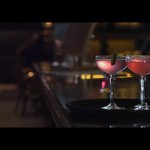

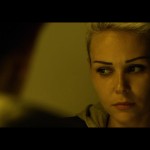
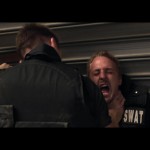



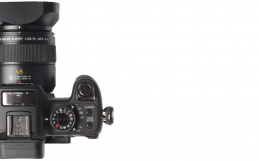
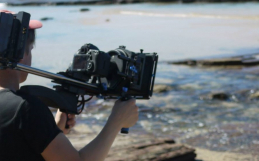

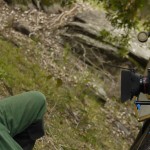
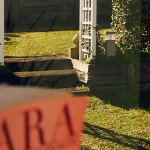
Hi anycam.wpengine.com!
Thanks a bunch for taking the time to share your personal insights on the AF-100 and provide so many examples of what it’s capable of.
It’s also great to read something from someone who has actually wrestled with the negative aspects in the field and found solutions!
I shoot with the HPX250, & the bulk of my work is ‘run and gun’ doco stuff, & events. It does the job, & I feel delivers a suitable product for the type of work I do. Clients are happy, I’m happy.
But as the scale of my projects are increasing, I want the option of achieving a shallower depth of field. I just don’t want everything to look flat like news footage! Obviously there are limits with the fixed lens. Your final comments got me thinking… I’m already familiar with the 250, so what are your thoughts on a 35mm adaptor?
Otherwise, the AF-100 has really peaked my interest since reading your article.
Thanks,
James
I think the 35mm adapters are really interesting and I’d like to pick one up once they are ridiculously cheep just for a bit of fun. That being said I would not recommend them for ease of use. They do make your camera much bigger, you loose a lot of light and they are quite fiddly and awkward.
The 2010 movie Monsters was shot on a Sony EX3 with the Letus 35mm adapter as I understand and looked really nice. But with all the new cameras around these days I’d say pick up something that does what you need out of the box, especially as there are so many great second hand deals going as all the tech changes.
Thanks for the comments and I’m glad you like the site 🙂
I came from a news background using typical expensive ENG cameras nicely built but limiting and well designed for news fast turn around. I decided to leave my employer and start my own business. The AF100 has taught me more about cameras and lighting than I thought possible. Been forced to learn to eek every last bit of picture quality in any given situation.
Even today when up against other cameras in corporate shoots like the Sony PMW 200 etc I keep getting comments ” how did he get that look etc ..ah its that bloody AF100 he is using”.
It has its faults but its a joy to use and it can deliver some stunning images and it still delivers great pictures. Its hard to describe, its the look the camera has a combination of its sensor and signal processing. Anyhow I cant see my AF100 retiring any time yet.
I totally agree. I recently picked up a BMC which is very nice but the main thing it has made me aware of is how good the little AF100 is. The BMC has a nicer image but the AF100 is a nicer camera in every other way. I thought the AF100 might have been sidelined but its been busier than ever lately as its simply the right tool for the job so often.
Great blog. I particularly liked your short, “Stations.” I have a question. Sometimes I get a great amount of noise in my blacks in scenes and other times I don’t. And the camera settings are the same. Do you have any suggestions. I really like my AF100 but that is a serious issue.
Thanks!
Thanks regarding the blog. The short film “Stations” is not mine. It was directed and shot by Michael Fisher. Ive updated the post with that info as I didn’t mean to leave it out.
Regarding the blacks on the AF100, I found I had similar issues when I first used the camera. My best advice would be to black balance at the start of every shoot. Make it part of your set up routine. I adjust my color balance for the shot and black balance straight after each time.
Also the gamma settings have a dramatic effect on noise. I found Cine D to be a bit noisy for my tastes. Bpress and Cine V are the two gammas I use. The native ISO on the AF100 is 400 ISO so if you can stay there. anything under, you introduce some noise, though 800 &sometimes 1600 are not to bad. I only use 200 if I want to knock back some light as it marginally reduces DR.
Primarily though you just need to make sure you are getting enough light. You should not be getting much noise if the image is exposed correctly. The wave form monitor is your friend 🙂
My AF100 Settings are:
Detail : -4
V Detail : -4
Coring : -2
Chroma Level : -4
DRS : 1 (this can introduce a wee bit of noise so you may not want this)
Gamma : Cine V
Matrix : Norm 2
Skin DTL : Off
Anything not mentioned is set to 0 or off.
Hope this helps,
Nat J
Nat — Awesome post. My AF100 just bit the dust but now looking to purchase another . . . I think . . . your article certainly is causing me to want to stay with it. . .
Hey Cathy, thanks so much 🙂
I got the BMC a wee while ago and love the image but everything else makes me love the AF100 more. I just wish Panasonic would make a new AF100 type camera, its such a good overall package.
Thanks for writing this article. I agree with most of what you have said. I have an AF100A for over a year and I’m still tweaking and still getting more out of this camera. I, like many people, wish I had the money to buy new cameras but economics has forced me to learn to get more out of my other cameras as well (2x Sony FX1000s) and a GH3. I shoot multi cam recordings of live theatre and concerts so the highlight issue has been a struggle. Matching the cameras has also been a challenge. Gerry
Thanks for the useful information. I am learning to get the most out of my AF100 and have been looking into an external recorder to improve the quality. I have found that lighting is important for this camera and am working on that. My first question for external recording is which is better HDMI or HD-SDI? Also, I read that the output from these is the same at 1080i/720p. So how can the external recording be better than internal if I am looking to record 1080p?
Thanks in advance.
Claude
Hi Claude,
You are right the AF100 really rewards good lighting and can punish poor lighting choices. Regarding the external recorders, there is no quality difference between hdmi & hdsdi, but hdsdi is a professional connector that locks in so it cant be accidentally pulled out. This makes it infinitely better and much nicer to use. On the other side, hdmi is a consumer connector and can easily be bumped or pulled out causing you issues. I would suggest getting one with hdsdi ans its a much better connector and as you get other professional cameras in the future you can be sure they will have a hdsdi connector. That said many dslr’s only have hdmi so a recorder with both is ideal. Id suggest the BlackMagic Design Video Assist as a good affordable option that has both hdsdi and hdmi: https://www.blackmagicdesign.com/products/blackmagicvideoassist
The Af100 outputs what ever you are recording in. So if you are recording in 1080 then it outputs 1080. The external recording is better because it circumvents the compression that the internal recording gets. Though be aware that external recording really only gives a slight improvement as AVCHD is a very efficient codec so you wont see a huge improvement with an external recorder.
Hope this helps & hit us up if you have any more questions 🙂
-Nat J